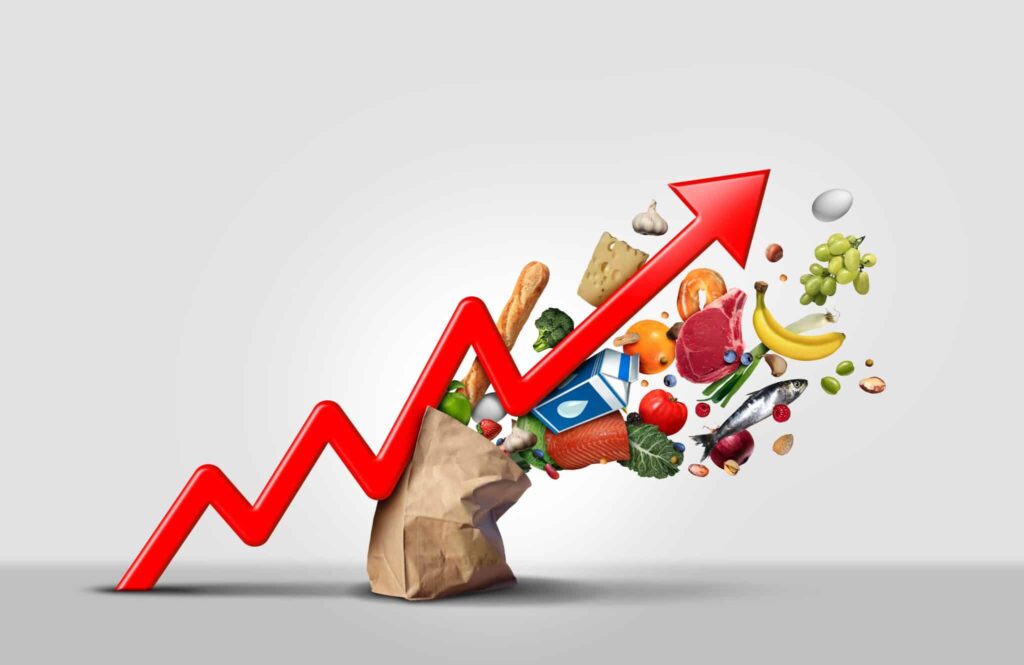
The inflation impact on the U.S. economy has become a major concern, with prices for goods and services climbing to unprecedented levels. Over the past year, consumers have felt the effects of inflation in nearly every aspect of their lives, from groceries and housing to energy costs. As inflation remains high, the Federal Reserve has taken steps to slow it down by raising interest rates, but the pressures persist, leaving many households struggling to keep up with rising prices.
This inflation impact is particularly challenging for middle- and lower-income families, who spend a larger portion of their income on essential goods. Higher costs for items like food, rent, and gas are forcing Americans to adjust their spending habits and reconsider their financial priorities. As inflation continues to affect consumer behavior, the broader economy could face long-term changes in demand and spending patterns.
In this article, we’ll delve into the factors driving inflation, how it’s shaping U.S. consumer spending, and the broader economic implications of these shifts.
The Causes Behind Rising Inflation
The inflation impact being felt across the U.S. is the result of several factors converging simultaneously. One of the primary drivers has been the post-pandemic recovery, which saw a sharp increase in demand for goods and services. As businesses reopened and consumers resumed spending, the supply chain struggled to keep up, leading to shortages and higher prices for many items.
At the same time, the cost of energy has surged, contributing to rising prices across various sectors. Oil and gas prices have been particularly volatile due to geopolitical tensions and disruptions in supply. This has not only increased the cost of transportation but also had a ripple effect on industries that depend heavily on energy, such as manufacturing and logistics.
Additionally, labor shortages have added to the inflation impact. With fewer workers available, businesses have raised wages to attract employees, passing those costs onto consumers. All these elements combined have created a perfect storm for inflation, pushing the cost of living higher for millions of Americans.
How Inflation Is Changing Consumer Behavior
The inflation impact on U.S. consumers is changing the way people spend their money. With prices rising across the board, many households are prioritizing essential purchases and cutting back on discretionary spending. This shift has been particularly noticeable in sectors like travel, entertainment, and dining out, where consumers are pulling back due to higher costs for basic necessities like food and fuel.
Grocery bills have seen some of the sharpest increases, forcing families to make difficult choices about what to buy. For example, higher prices for meat, dairy, and fresh produce have led many to switch to cheaper alternatives, such as processed or frozen foods. Meanwhile, consumers are also seeking out discount retailers and generic brands in an effort to stretch their dollars further.
The housing market has also been affected by the inflation impact. With mortgage rates climbing, potential homebuyers are finding it harder to afford new homes, while renters are facing record-high increases in rent prices. Many are opting to stay put, delaying major purchases or investments in order to weather the economic storm. This cautious approach to spending could have lasting effects on the overall economy, especially if inflation continues to persist.
Potential Solutions and Economic Outlook
As the inflation impact continues to ripple through the economy, policymakers and economists are searching for solutions to alleviate the pressure on consumers. The Federal Reserve has already taken steps to combat inflation by raising interest rates, a move intended to cool demand and slow price growth. However, this strategy comes with its own risks, as higher interest rates can lead to reduced borrowing, slower economic growth, and even a potential recession.
Some experts argue that targeted government interventions, such as subsidies for essential goods or tax breaks for lower-income households, could help ease the burden of inflation. Others believe that resolving global supply chain issues and increasing domestic production of key goods will be crucial in bringing down prices over the long term.
In the meantime, the economic outlook remains uncertain. While inflation is expected to gradually decline, the path to stabilization is likely to be slow and uneven. For U.S. consumers, the inflation impact will continue to shape their spending decisions in the months ahead, influencing everything from the types of products they buy to the services they can afford.
Conclusion
The inflation impact on U.S. consumer spending is undeniable, as rising prices force Americans to adjust their habits and rethink their financial priorities. From grocery shopping to housing, the cost of living is reshaping the way people interact with the economy. As policymakers work to find solutions, the long-term effects of this inflationary period remain to be seen, but its influence on consumer behavior and economic growth is already apparent.
Antonio Maracas
Como escritor, minha paixão é transformar ideias em palavras que ressoam com os leitores.
